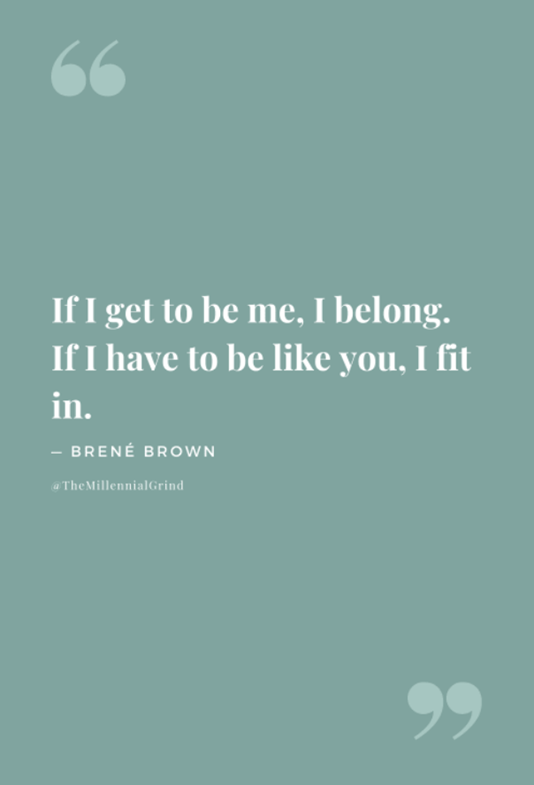Understanding the difference leads to greater authenticity

When you work hard to fit in, you’re spending a lot of energy simply to be a part of something. You’re always assessing what’s OK to say and do then adapting to other’s expectations.
You’re essentially acting. And it zaps your creative energy. Pretending is so exhausting.
Brene Brown, a researcher and expert on shame, vulnerability, and leadership, explains what it means to belong, “True belonging doesn’t require you to change who you are, it requires you to be who you are.”
Even when you fit in a group, if you’re not bringing your authentic self, it’s not actually you that’s belonging. It’s an incomplete version of you. Sometimes we dilute who we are so we can fit in. At GE Appliances, we don’t want employees to feel like this at work. Here are some steps you can take to nurture a sense of belonging:
- 1. Accept yourself for who you are. Ask: What can I do to become more accepting of myself and others?
- 2. Bring your authentic, imperfect self to the workplace in a skillful, professional manner. Choose the substance, process, and timing of revelations for the task at hand. Even if you think your 100% authentic self won’t be accepted, you’ll feel better when you show more of your personality and innovation.Ask:Am I diluting myself to fit in at work? What can I do to bring more of my personality and creativity into the workplace?
- 3. You’re embraced for who you are. This is tricky because you can’t control whether you’ll be accepted or not in every environment or circumstance, but you can control whether you show up as your authentic self.
Belonging is the fundamental human need to be a part of something larger than us but it’s important to remember the difference between belonging and fitting in.
Sources:
